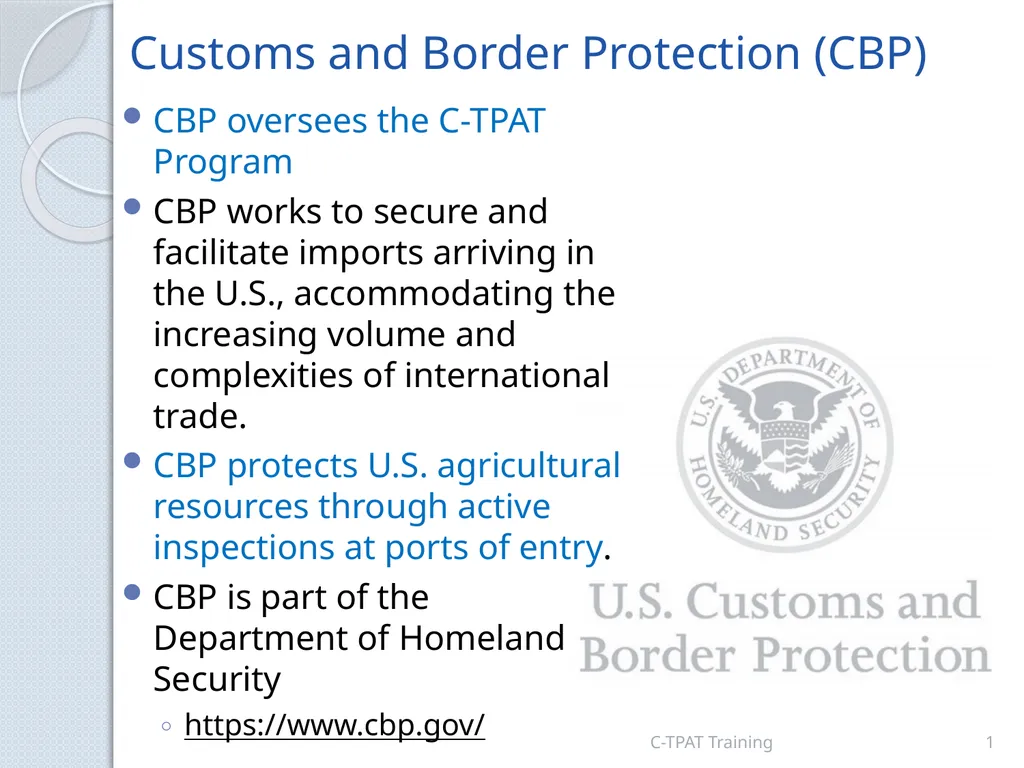
CBP oversees the C-TPAT Program CBP works to
Author: debby-jeon | Published: 2025-08-08
Description: CBP oversees the C-TPAT Program CBP works to secure and facilitate imports arriving in the U.S., accommodating the increasing volume and complexities of international trade. CBP protects U.S. agricultural resources through active
Download Presentation
Download the PPT/PDF: Download
Transcript:
Loading transcript…